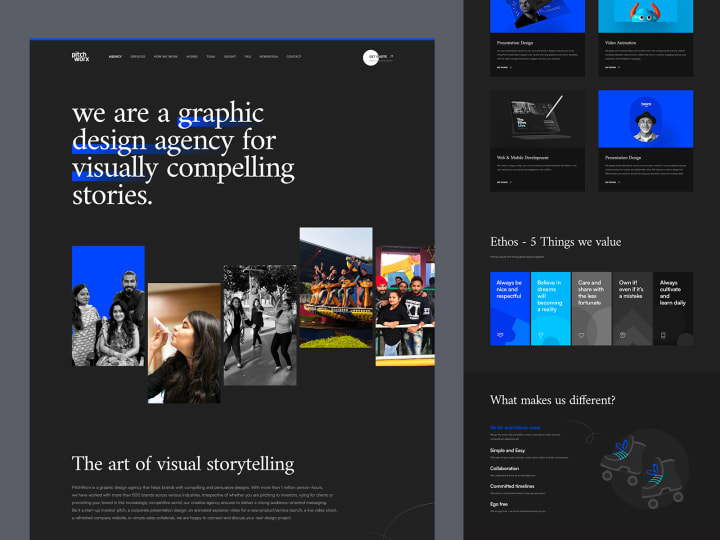5 Tips For Great Outsourcing Development Culture
Outsourced development allows companies to reduce the load on the internal team. For best results, one should also consider creating a healthy development culture. Discover how to establish it in your company:

After the pandemic, outsourcing has become one of the most popular ways to develop a mobile app, create a website or build software. Compared with traditional ways of development, it turned out to be extremely viable and beneficial. This strategy allows you to hire a qualified team worldwide without losing communication. It also reduces costs for transportation, office management, equipment, etc.
74% of IT businesses are already delegating their business processes, while 70% of companies prefer this approach for high cost efficiency. For best results, one should consider creating a healthy development culture. It includes not only communication practices but lots of other methods. What advantages do you get?
- Improve reputation on the market
- Attract talented specialists
- Strengthen the company’s processes
- Stimulate business growth
Let’s see what decisions you can make to establish a good atmosphere in your company.

Create Values
Every time-proved relationship is based on trust and beliefs, including a business one. Your company should have a particular codex that you and your employees follow. What does it include?
- Overall goals and objectives for the business;
- Strives and motives for doing the job;
- Internal laws that describe staff’s behavior in the workplace;
- Guarantees in case things go south.
This set of laws should also apply to remote teams. It doesn’t mean that they have to wear your corporative uniform. Outsourced staff should clearly understand why you hired them, what your mission is, and what app development methods you prefer. Apart from these options, you can also include simple things like fast communication, the integrity of all processes, etc.

For a long-term business relationship, it’s wise to collaborate with people right from the start. If the remote developer is experienced and has an opinion on the subject, the in-house team should adhere to his advice. On the contrary, when a team member can’t express their point of view, then a miscommunication issue is already at the corner and might disrupt the process.
In other words, a healthy company culture suggests regarding the outsourcing team as business partners, not mercenaries. There are high chances that you will get the same good attitude in return.
Provide Onboarding & Roadmaps
Companies with the best culture consider training and onboarding for new employees to be essential. People discover details about their position, work processes, standards, etc. Moreover, they get familiar with other staff, complementing the team’s integrity. With outsourced personnel, a face-to-face meeting is not always possible. Luckily, there are tons of communication ways in our modern world.
First of all, hold video meetings via messengers like Zoom or Skype. A live talk is more effective than written communication. It helps provide new information more clearly: people can ask questions on the go and receive answers without delay. No surprise that 78% of startups and medium size companies prefer using video calling software. 87% of remote workers ensure they feel more involved in project development when using video meetings. Therefore, video conferencing is a perfect tool for onboarding outsourced teams.
Apart from general onboarding, people should understand the roadmap of your project. What stages do they have to take? What are the stage objectives? What’s the goal? Provide them with detailed dashboards, systems, and diagrams, so they have clearly arranged information for every work stage. What’s more, you can additionally showcase a general roadmap for the whole project to deliver the idea and scale. This approach speeds up the process and removes possible miscommunications.
Stick to Agile methodology
A roadmap provides a path, but you also need something to keep the in-house and remote teams going. Here is when proper team management comes into play.
There are various methodologies to choose from, each suitable for particular tasks. However, Agile is a golden standard for most IT companies. The statistics for 2022 show that companies have approximately 60% revenue growth after implementing this system.

Just like a good culture of a company, this approach is based on a collaborative way of solving issues, adaptive planning, and managing risks. In other words, the team becomes extremely flexible. Each person has their own task pool, but they still work together with other developers at the current stage. The team concentrates on critical matters when things go south and balances the final product. The working software and response to any changes are more vital than having comprehensive documentation. Project managers often mix Agile with other methodologies, like Kanban or Waterfall, for better results.
Implementing a new system requires an experienced leader. Remote teams may have their own approaches, and adapting to new ways of working without losses is challenging. Agile-friendly tools like Miro, Dropbox, Trello, Slack, and others will help you integrate outsourcing development into work processes.
Communicate as clearly as possible
Clear communication is crucial in any type of project. However, it’s a must-have when dealing with offshore or nearshore teams. Their results depend heavily on the received information, especially if you outsource UI / UX design. In this case, there are high chances the concept will not meet initial requirements and expectations.
Well-established communication starts with a schedule. Depending on the management type, set up video meetings with a specific interval: every week or two weeks is an optimal period. At the same time, the key stakeholders should also stay in the flow to give feedback. Hold meetings more frequently when the project faces risks to stabilize the working process. This approach will also provide on-time solutions to any emerging problems.

Another vital feature of communication during outsourced product development is clarity. Here, one meets several obstacles. First of all, it’s language and cultural differences. Not every offshore team member will speak English like a native, if they speak it at all. That’s why it’s wiser to keep everything as simple as possible without using special terminology. Therefore, everyone in the remote team will be able to understand the task description, even with an automatic translator.
The culture is not as flexible as the language. You and your in-house team should respect others’ beliefs to ensure the best results. For example, the Asian culture requires young people to honor the experience of seniors in almost every life aspect. In Arabic countries, one should present gifts and hold a few meetings with a potential business partner before striking a deal. Any of these features influence the decision-making as well as the communication process.
Perform tests and quality assurance
When using outsourced web development, it’s essential to ensure the final quality. A malfunction can disrupt the release process and damage the company’s reputation.
A healthy development culture recommends creating policies for app testing. That specific strategy describes when and how a product will be tested. Be sure to include different testing types in the document. To avoid most bugs, allow peer code reviews for developers. They will be able to provide feedback on the current code state on the go, while the remote team will fix the issues found. Automatic tools and no-code methods will also complement the process. Such toolkits eliminate the human factor and speed up the working process. They are perfect for both front-end and back-end development.
Testing policies are usually accompanied by a quality management system or so-called QMS. These are various documents and guidelines that help remote teams to achieve desired standards. It also allows you to meet the client’s expectations and enhance them if necessary. Both internal and external personnel should follow the accepted QMS to avoid possible issues.
Summing up
Outsourced mobile app development allows companies to reduce the load on the internal team. After assigning secondary tasks to remote personnel, the in-house developers are able to focus on must-have features. Together with great company culture, it dramatically speeds up the business processes, eliminates misunderstandings, and helps avoid any possible bugs in the product.
About the Creator
Shakuro
We are a web and mobile design and development agency. Making websites and apps, creating brand identities, and launching startups.






Comments
There are no comments for this story
Be the first to respond and start the conversation.